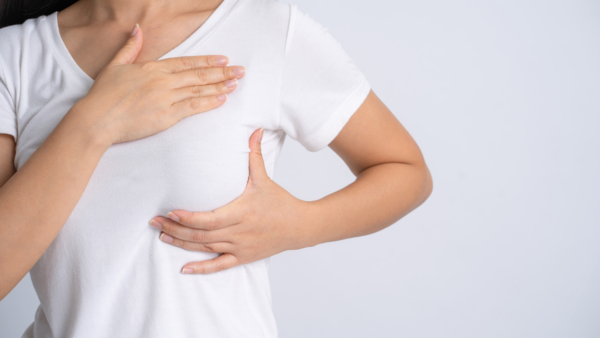Now one of the ways to do this is breast self-examination, notes Dr. Divya Singh, Senior Surgeon at Ram Manohar Lohia, with interests in breast, endocrine surgery and surgical oncology specialities. “Breast self-examination is one of the ways in which women will be able to take care or take charge of their own breast health. Regularly doing a breast self-exam can help in early detection of any lumps or bumps which may possibly develop into carcinomas later.”
Breast Cancer Awareness Month: How to do a breast self-exam to check for cancer
What is breast self-examination?
“Breast self-examination is a stepwise procedure by which women can examine their own breasts from the comfort of their homes. Now this takes just a few minutes of your time and with this any woman will be able to detect any infections, lumps and bumps, dimpling or puckering of the skin or any changes in her nipple,” explains Dr. Singh.
What are the signs to look for in a breast self-exam?
Using the flat of your palm or first 3 fingers, you have to use light to medium pressure to examine both the breasts. Here is what all you need to do, as explained by Dr. Singh:

- In front of the mirror you can check if both the breasts are at the same level. If there is a slight discrepancy, it is completely normal as one breast can be fuller than the other and this is totally normal. But no major discrepancies should be there.
- You should raise your hands above your head and see if again both the breasts are at the same level.
- You should look for any changes on the skin such as redness or edema (some sort of swelling).
- You should check if the nipples are at the same level or if there is any dimpling or puckering on the skin.
- With the flat of your hand, you can start examining the breast for any lumps, bumps, any coarseness that you can feel in the breast etc.
- Always remember to examine the underarm area also because a woman’s breasts not only extend in front of the chest but they go towards the axillary region – that is your underarm region. There are also many lymph nodes in this area which can be swollen in the case of some infection or a possible malignancy.
- Now the fuller part of the breast is on the sides of the breast so always use the palm of your hand or first three fingers to apply pressure and check the sides of both the breasts. You repeat the procedure on one side and then the same thing on the other side.
When should a breast self-examination be done?
“A breast self-examination is ideally done 3-5 days after you have stopped bleeding, i.e., after your menstruation. This is so because there are hormonal changes or fluctuations which take place throughout your menstrual cycle,” explains Dr. Singh, adding, “Your breasts also have less lumps and bumps after you have finished bleeding. So, it will be easier to examine and to detect any new lumps and bumps that might be there in the breast.”
Read more: How lifestyle choices and diet can impact breast cancer risk?
“With the help of breast self-examination we can help in early detection of breast cancers and it is one of the safest and the easiest ways in which we women can take charge or control of our own breast health,” Dr. Singh signs off.

